Migration this spring has been more of a tease than a treat for me. That magical avian wave that sets the treetops swarming with flashy warblers never washed over me. My best day brought 8 warbler species rather than the 15-20 requires to get my adrenaline surging!
It’s not as if I haven’t been trying; instead, I’ve been hitting local hotspots like Cobb’s Hill, Island Cottage Woods, and the Long Pond firehouse woods out of sync with my desired birds. Sure I’ve got a decent plate of warblers (Blackpoll, Bay-breasted, Canada, Chestnut-sided, and Magnolia among others) and vireos (Philadelphia, Red-eyed, and Warbling) but, with summer just weeks away, I’m still starving for spring.
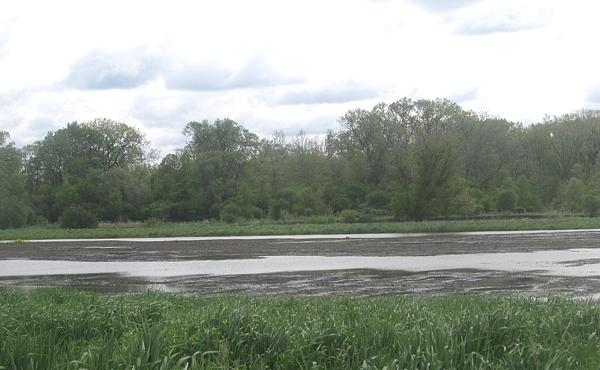
An excursion Seth and I recently made to Montezuma NWR serves as a prime example of this season’s frustrations. The two of us have been chasing Black Terns at Montezuma for years but our annual visits never coincided with tern breeding season. Now that I live less than an hour away, there was no excuse for missing these magical marsh terns. Yet the unusual spring chill and high winds set a poor stage for the discovery of a life bird.
Arriving at the Montezuma Main Pool always sets the heart racing just a bit at the prospect of rails and bitterns right off the road. That unfortunately didn’t seem all that likely as the refuge wardens have seen fit to draw down the pool again. It seems like just yesterday (two years ago actually) that the pool was drained to simulate the the natural drought cycle the ecosystem demands. That meant no rails or bitterns and fewer of the other birds I look to here. On the bright side, the newly shallow pool must have isolated a lot of fish because a large crowd of Bald Eagles (mostly juveniles) and Great Blue Herons congregated wing to wing in its center. On the pool’s fringes, Mallards and Blue-winged Teal mingled with a slew of sandpipers including Solitary, Spotted, Pectoral, Least, Semipalmated Plover, and both Greater and Lesser Yellowlegs.
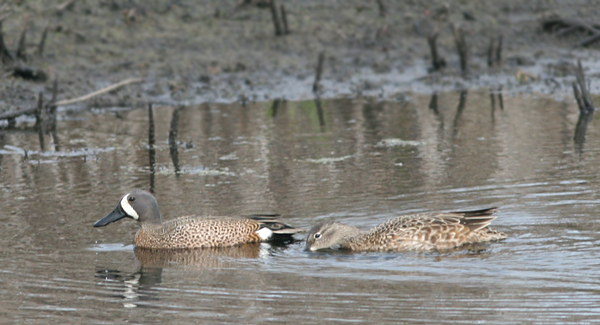
Blue-winged Teal pair
As low as the Main Pool was, May’s and Tschache seemed high. This put many birds out of sight but we still spotted Common Moorhens, American Coots, and Redheads. Of much greater interest were the two brief Black Tern flyovers. Seth and I might have liked better views but we can’t say we missed again. I probably would have stayed for longer looks and maybe even photos but this May day was cold! Anyway, we imagined that an ideal way to get out of the wind while watching migrating warblers would be to trek the Esker Brook Trail. Sounds good in theory, right?
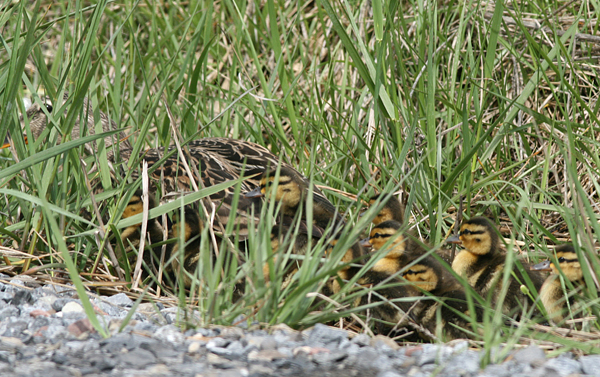
Mother Mallard with chicks
You might recall from the chronicles of our 2008 Montezuma Muckrace that the 10,000 Birds Butcher Birders didn’t fare very well on the Esker Brook trail when it came to warblers. I can’t say exactly the same thing about my most recent experience. To be fair, Seth and I did see a lot of warblers. Too bad every single one was a Yellow Warbler! This is hardly hyperbole. We did spy one Common Yellowthroat but all the rest were yellow. Brutal. We hiked most of the trail in sheer disbelief, buoyed on by the occasional Rose-breasted Grosbeak or Olive-sided Flycatcher. However, besides Red-winged Blackbirds, Barn and Tree Swallows, and the aforementioned yellow birds taunting us from every treetop, we came up inexplicably empty. The avian mix seemed neither pre- nor post-peak as far as migration is concerned. We just had a bad day.
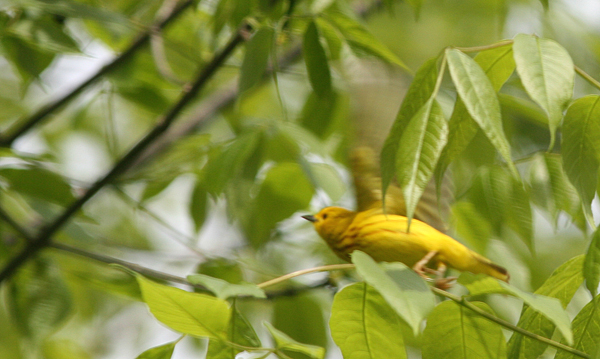
Suckers!
Then again, our day wasn’t bad at all. As noted naturalist and author William Leon Dawson expressed so eloquently, “A day is happily spent that shows me any bird that I never saw alive before!”
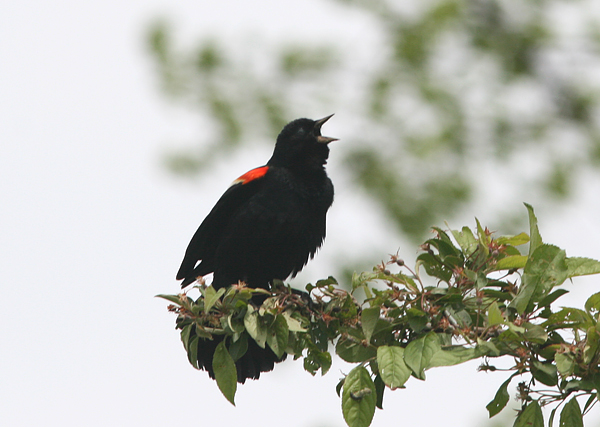
Red-winged Blackbird











Leave a Comment